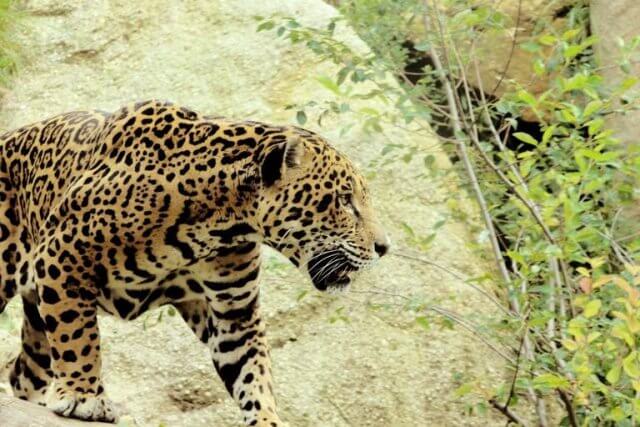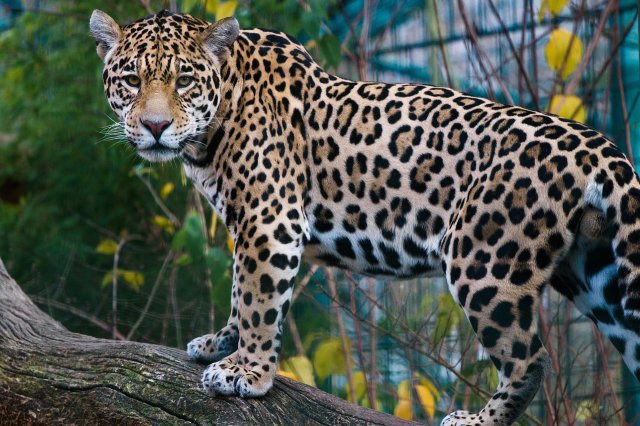How Can We Help Protect Jaguars from Extinction
Protect Jaguars from Extinction
The jaguar, scientifically known as Panthera onca, is a majestic and powerful big cat that roams the forests and grasslands of the Americas. With its distinctive coat pattern and strong build, the jaguar is an iconic symbol of the wild. However, this magnificent species is facing the threat of extinction due to various factors such as habitat loss, poaching, and human-wildlife conflict. In this article, we will explore the importance of protecting jaguars and discuss effective strategies to ensure their survival.
The Importance of Jaguars in Ecosystems
Jaguars play a crucial role in maintaining the balance of ecosystems they inhabit. As apex predators, they regulate the populations of their prey species, preventing overgrazing and maintaining the health of vegetation. By controlling herbivore populations, jaguars indirectly contribute to the preservation of biodiversity and the overall stability of ecosystems.
Furthermore, jaguars are considered umbrella species, meaning that their conservation benefits a wide range of other species that share their habitat. Protecting jaguars requires the preservation of large areas of intact forests and grasslands, which in turn provides habitat for countless other plants and animals. By safeguarding jaguars, we are also protecting the countless species that rely on the same ecosystems for their survival.
The Threats Facing Jaguars
Despite their ecological importance, jaguars are facing numerous threats that are pushing them towards extinction. The primary threat is habitat loss and fragmentation due to deforestation, agriculture, and urbanization. As human populations expand and encroach upon jaguar habitats, the available space for these big cats to roam and hunt diminishes, leading to increased competition and conflicts with humans.
Poaching is another significant threat to jaguars. Their beautiful fur and body parts are highly valued in the illegal wildlife trade, driven by demand for traditional medicine, luxury items, and trophies. The relentless pursuit of jaguars for their body parts has decimated their populations in many regions, making them vulnerable to extinction.
Human-wildlife conflict is also a pressing issue for jaguars. As their natural prey becomes scarce due to habitat loss and overhunting, jaguars may turn to livestock as an alternative food source. This often leads to conflicts with farmers and ranchers, who may resort to retaliatory killings to protect their livelihoods.
Strategies for Protecting Jaguars
Protecting jaguars requires a multi-faceted approach that addresses the various threats they face. Here are some effective strategies that can help safeguard these magnificent big cats:
1. Habitat Conservation
Preserving and restoring jaguar habitats is crucial for their survival. This involves protecting large areas of intact forests and grasslands, establishing wildlife corridors to connect fragmented habitats, and promoting sustainable land-use practices that minimize deforestation and habitat destruction.
2. Strengthening Anti-Poaching Efforts
Combatting the illegal wildlife trade and poaching is essential for jaguar conservation. This can be achieved through increased law enforcement efforts, stricter penalties for wildlife trafficking, and raising awareness about the negative impacts of the trade on jaguar populations.
3. Promoting Coexistence with Local Communities
Engaging and involving local communities in jaguar conservation efforts is crucial. By providing alternative livelihood options, such as ecotourism or sustainable agriculture, communities can reduce their dependence on activities that harm jaguars and their habitats. Additionally, implementing measures to protect livestock, such as improved fencing and predator-friendly practices, can help mitigate human-wildlife conflicts.
4. Research and Monitoring
Investing in research and monitoring programs is essential for understanding jaguar populations, their behavior, and their habitat requirements. This knowledge can inform conservation strategies and help identify priority areas for protection.
Conclusion
The protection of jaguars is not only crucial for the survival of this iconic species but also for the health and resilience of the ecosystems they inhabit. By addressing the threats they face and implementing effective conservation strategies, we can ensure that future generations will continue to marvel at the beauty and power of these magnificent big cats. It is our responsibility to act now and protect jaguars from extinction, for the sake of biodiversity and the well-being of our planet.
Read More About Jaguars From Wikipedia





